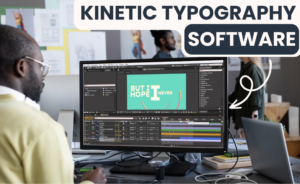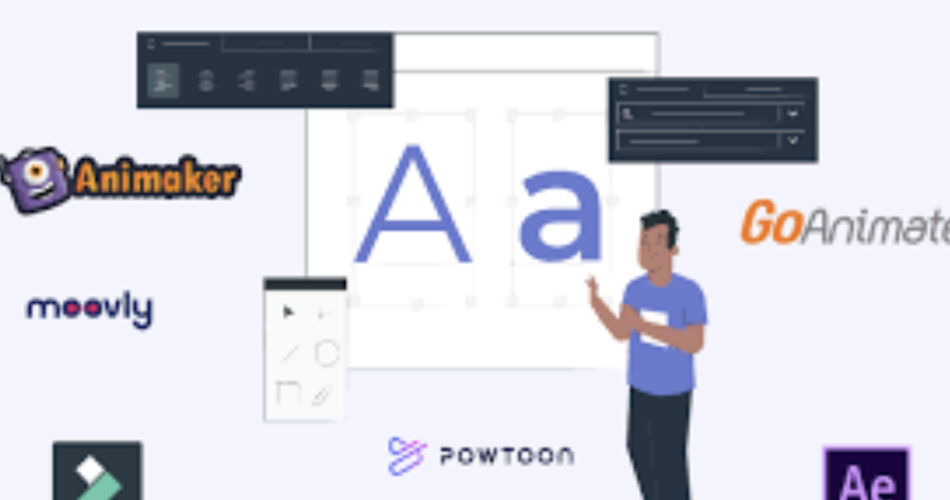Kinetic typography, often referred to as “text animation” or “moving text,” is a captivating design technique that brings text to life through motion, creating engaging and visually dynamic content. This art form has gained significant popularity across various media platforms, including advertising, film, video production, and digital storytelling. To create stunning kinetic typography, designers rely on specialized software tools. In this comprehensive article, we’ll explore the world of kinetic typography software, its features, practical applications, and the impact it has on modern visual communication.

Mastering Kinetic Typography Software
Understanding Kinetic Typography
Kinetic typography is the art of animating text in such a way that it conveys not just the written message but also the emotional tone, mood, and context. This animation can involve a wide range of effects, such as:
- Letter-by-letter or word-by-word animations.
- Rotation, scaling, and position changes.
- Color and font transitions.
- Syncing text movement with audio or music.
- Simulating physical movements, like bouncing or sliding.
The magic of kinetic typography lies in its ability to transform static text into a dynamic visual experience, making it an indispensable tool for video producers, motion graphics artists, and advertisers.
Popular Kinetic Typography Software
- Adobe After Effects: Adobe After Effects is one of the most widely used tools for creating kinetic typography animations. Its powerful features, such as keyframing, expressions, and an extensive library of plugins, make it a top choice for professionals. After Effects allows for precise control over text animations, including complex transitions, 3D effects, and seamless integration with video and audio.
- Apple Motion: Apple Motion is a user-friendly tool for creating kinetic typography on macOS. With its intuitive interface and templates, it’s an excellent choice for beginners and intermediate users. Motion allows you to animate text, graphics, and create captivating title sequences that integrate seamlessly with Final Cut Pro.
- HitFilm Express: HitFilm Express is a versatile and free video editing and compositing software that includes powerful kinetic typography features. It offers a user-friendly interface with advanced text animation capabilities and seamless integration with visual effects.
- Cinema 4D: Cinema 4D, primarily known as a 3D modeling and animation software, also offers powerful text animation tools. It’s ideal for designers looking to incorporate 3D kinetic typography into their projects, adding depth and realism to their animations.
Features and Capabilities
Kinetic typography software provides a range of features to bring text to life:
- Keyframing: Keyframes are the foundation of kinetic typography animation. Designers set keyframes to define the beginning and end points of text animations and transitions.
- Text Effects: These tools allow you to manipulate text in various ways, including scaling, rotating, fading, and skewing.
- Timing and Syncing: Proper synchronization with audio or video is crucial for kinetic typography. Software provides tools to match text movements and transitions with the rhythm of the accompanying sound.
- Transitions: Kinetic typography software includes transitions to smoothly shift between text elements. This creates a polished and professional look.
- Templates: Many software options offer pre-designed templates that make it easier to create dynamic text animations with minimal effort.
Practical Applications
Kinetic typography has a broad range of applications, including:
- Video Introductions: It’s often used to create engaging opening sequences for videos, such as YouTube intros or film titles.
- Advertisements: Kinetic typography adds visual interest to promotional content, making it more memorable and shareable.
- Educational Videos: Instructors use kinetic typography to make educational content more engaging, helping students retain information.
- Social Media Content: Short, animated text can grab viewers’ attention on platforms like Instagram, TikTok, and Twitter.
- Storytelling: Kinetic typography is frequently used in documentaries and narrative-driven content to emphasize key points or quotes.
Impact on Modern Visual Communication
The rise of kinetic typography has transformed the way we consume and interact with content. Its dynamic nature engages viewers and makes information more accessible and memorable. In a digital age where attention spans are limited, kinetic typography offers a way to convey information effectively and creatively. Its applications in marketing, education, and entertainment continue to grow, showcasing its significance in modern visual communication.
Conclusion
Kinetic typography software empowers designers and content creators to transform static text into dynamic, visually compelling animations. Its versatile applications in various media industries and its impact on modern visual communication make it an essential tool for those seeking to engage, inform, and captivate audiences. Whether you’re a professional animator or a novice exploring the world of kinetic typography, the right software can make the difference between ordinary and extraordinary text animations.

